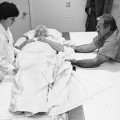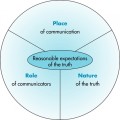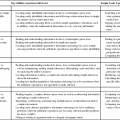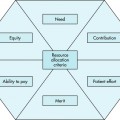9 After completing this chapter, the reader will be able to perform the following: • Define diversity and describe interaction patterns. • Define the implications of a study in diversity. • Compare the ways in which diversity and ethical problem solving relate to each other. • List ways that values affect issues of diversity. • State and discuss the 2004 Institute of Medicine reports and resulting mandates. • Identify the current state of cultural diversity in the health care professions. • Define linguistic and cultural competencies. • List the mandatory culturally and linguistically appropriate service standards for most health care providers. • Identify and discuss the law regarding discriminatory patient treatment. • State and discuss the origins of discrimination law. • Identify the two types of sexual harassment. • Define sexually harassing behavior. • Identify the prima facie case of employment discrimination and hostile work environment, including sexual harassment. Imaging professionals, as well as other health care professionals, should be able to identify and accept differences among people. These differences include much more than skin color or native language. Imaging professionals must be knowledgeable about patient attitudes and perceptions regarding imaging procedures. Their mission is not to change patients so that they are all similar but to better understand the differences of their patients as they go about their work.1 Imaging professionals should develop their interpersonal qualities at all educational levels. Educational programs should emphasize an appreciation and respect for diversity. According to the proceedings from the American Society of Radiologic Technologists (ASRT) National Education Consensus,2 issues of diversity will have an increasing impact on the imaging profession in this century. The ASRT House of Delegates has adopted a position statement consistent with the goals of cultural competency.3 Within this chapter, diversity is not defined merely as a variety of ethnicities. Rather, it includes differences that may be rooted in culture, age, experience, health status, gender, sexual orientation, racial identity, mental abilities, and other aspects of sociocultural organization and socioeconomic position.4 Issues in diversity may be divided into primary and secondary dimensions.5 Primary dimensions include physical and mental health, sexual orientation, age, ethnicity, and gender. Secondary dimensions include income, marital status, geographic location, education, and religion. The encouragement of diversity is an inclusive process of appreciation of the unique contributions different individuals with differing backgrounds bring to an organization.5 For example, an educational program encouraging diversity values the differences among students and asserts that their uniqueness contributes to the formation of more knowledgeable and experienced professionals who will provide a higher standard of care for imaging patients. The encouragement of diversity requires individuals to move beyond the Western tradition by broadening their learning and opening their minds to new forms of thought.6 As teachers mentor students through the educational process, they must also assist the students in moving beyond any self-centered worldviews. Even students from similar geographic locations and of similar races bring unique insights to the class as a result of their differing experiences and backgrounds. As they share these differences, they increase their knowledge base, which provides them with greater empathy for their patients and one another. This intellectual broadening is a crucial component in establishing an appropriate educational and working environment for people of many backgrounds. Imaging professionals should be able to recognize the interaction patterns commonly encountered when issues of diversity are discussed. These interaction patterns are labeled -isms because of their common word endings. Each -ism involves a tendency to judge others according to a standard considered ideal or presumed to be “normal.” The -isms are grounded in bias, prejudicial in attitude, and discriminatory in their behavioral expression. An -ism is centered on personal judgment, regardless of evidence (Box 9-1).7 A study conducted in a midwestern state concerned the incorporation of diversity topics into the imaging sciences curriculum.8 Researchers gathered information with a survey that asked a variety of questions of the program’s directors and students. The majority of respondents answered that topics relating to diversity were important and should be included in the curriculum. A sampling of the comments that were provided in answer to the survey and may be of interest to imaging professionals is included in Boxes 9-2 and 9-3. A small percentage of students enrolled in the programs believed that issues of multiculturalism and diversity are not important to the imaging curriculum. The researcher was concerned about this result. If students do not believe that an understanding of the differences among patients is important, patient care may suffer. Students who do not support multiculturalism may hold that all patients should be treated equally and medicine should be color blind or blind to other differences. This implies that all patients have the same needs. Imaging students would do well to remember that patients are unique and deserve imaging professionals able to recognize individual needs, but they do also all deserve quality imaging services. Program directors need to investigate issues of diversity early in the educational program. Caring requires an identification with and respect for the needs of all patients. When students respect differences, they are better able to care for patients. Many situations require knowledge of the similarities and differences in patients and cultures. The more imaging professionals know about diversity, the more they can ready themselves for these interactions. Certain acceptable approaches are recommended for interactions of imaging professionals with all cultural groups (Box 9-4). In addition, categories for basic cultural assessment enable imaging professionals to provide high-quality imaging services for a variety of patients (Box 9-5). So far this chapter has discussed the importance of respecting the ways in which human beings differ from one another, but imaging professionals also should realize that individuals are more alike than they are different. Every group and individual must manage the same basic requirements of living to survive and thrive; to do so, they choose and follow a set of values. These universal values include orientation toward nature (including the supernatural), time, activity, relationships with other people, and the nature of humankind.9 Imaging professionals should understand their place and that of the patient in the continua of values. They also should consider the ways in which others’ worldviews differ from their own. This consideration enables imaging professionals to understand themselves, their colleagues, and their patients better and in doing so to become more effective in recognizing their own and others’ perspectives and the ways in which these perspectives influence relationships.4
Diversity
ETHICAL ISSUES
DIVERSITY DEFINED
Interaction Patterns
A Study in Diversity
DIVERSITY AND ETHICS
DIVERSITY AND VALUES
Diversity








